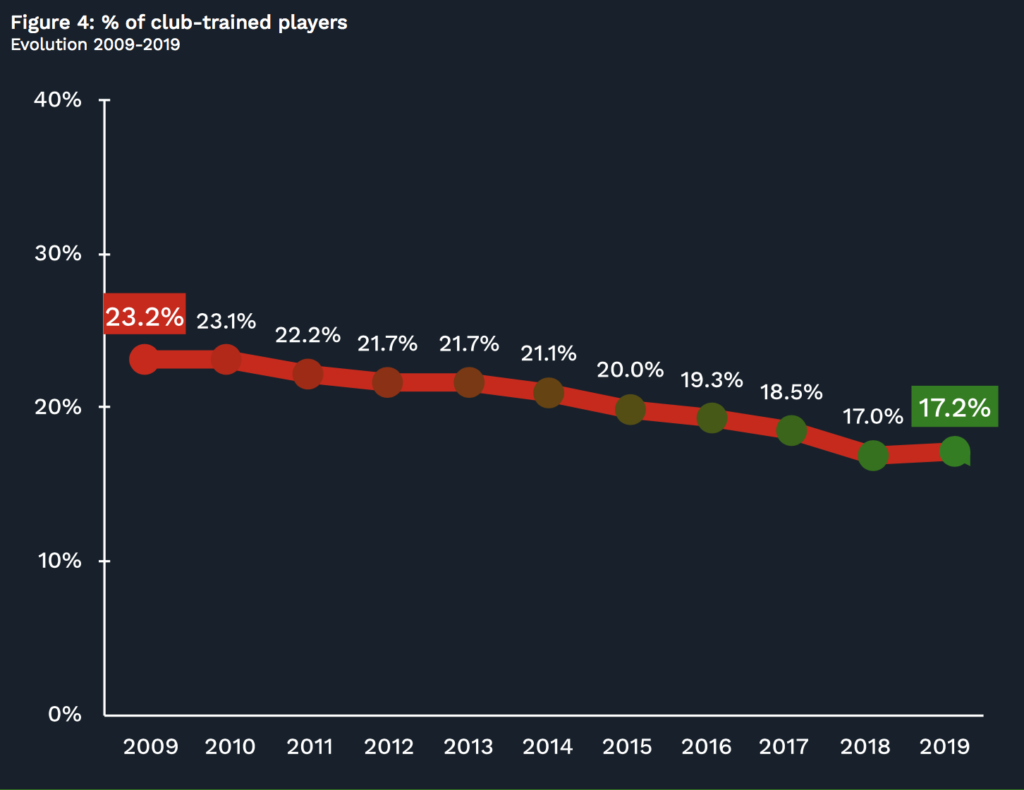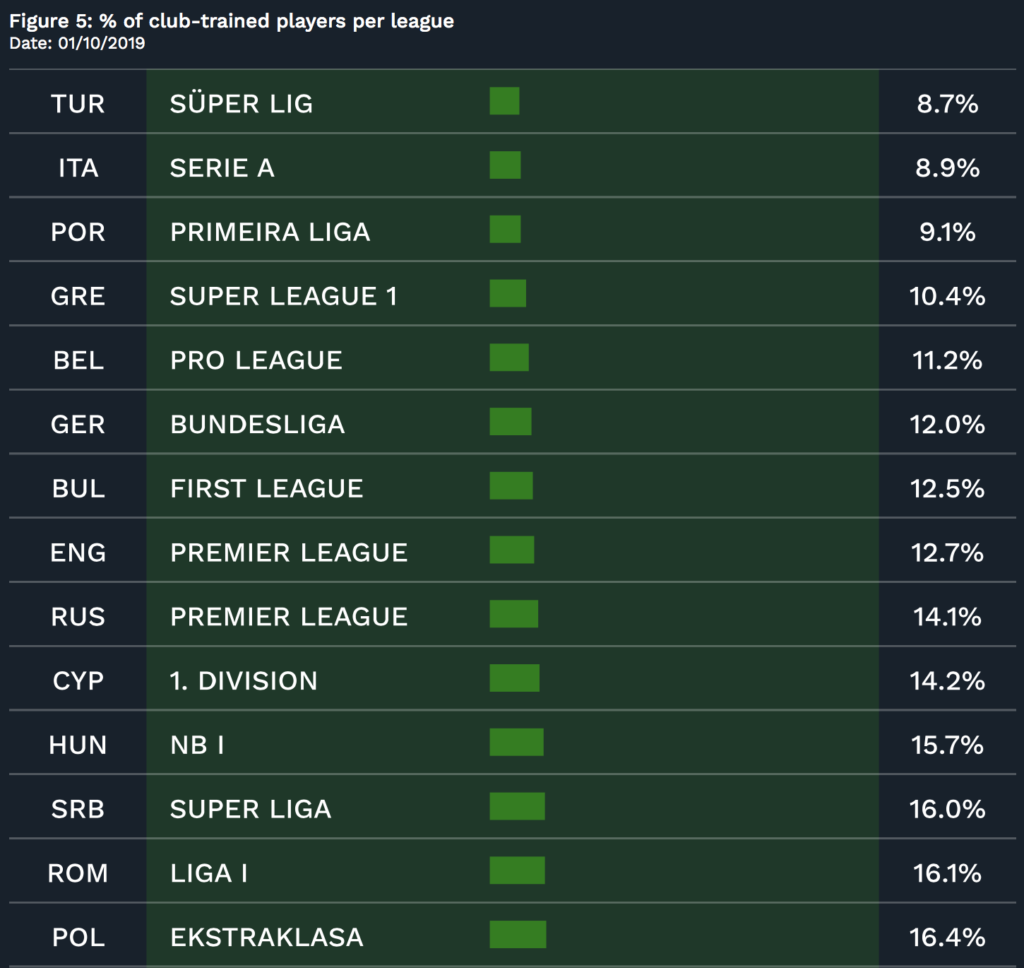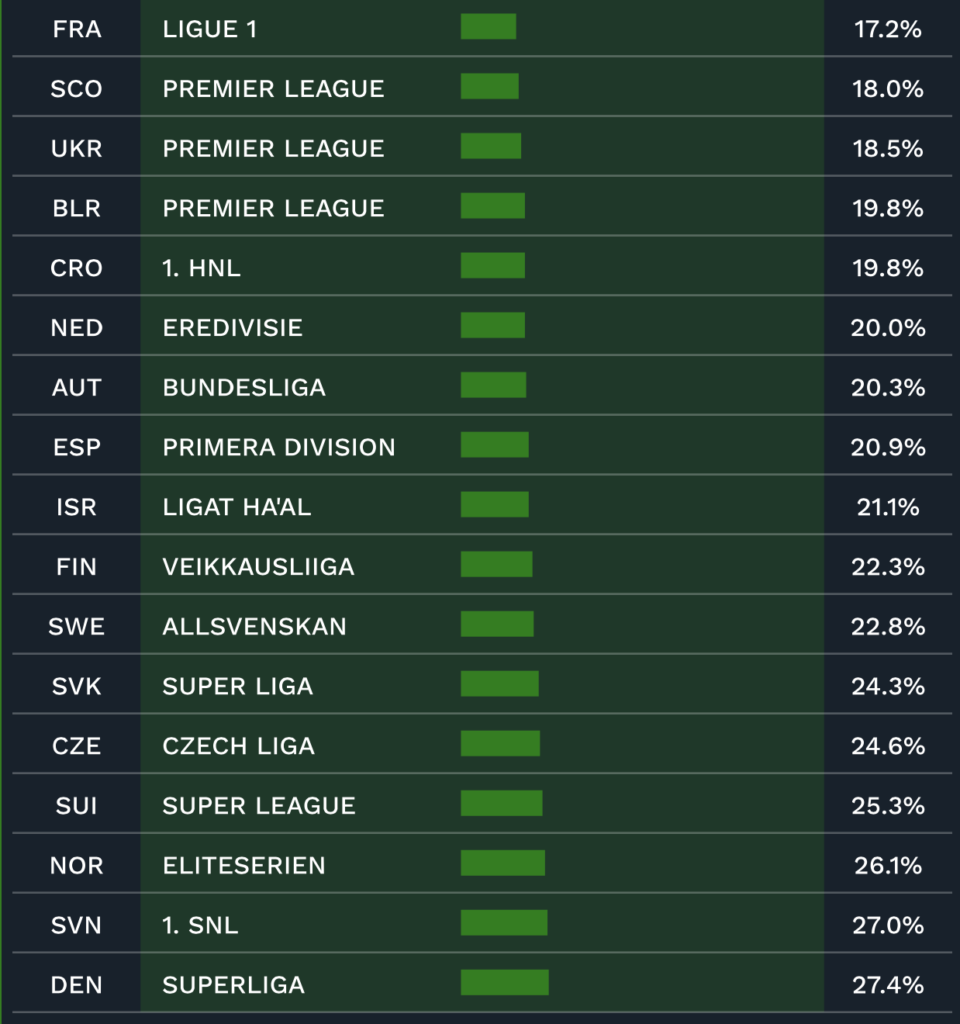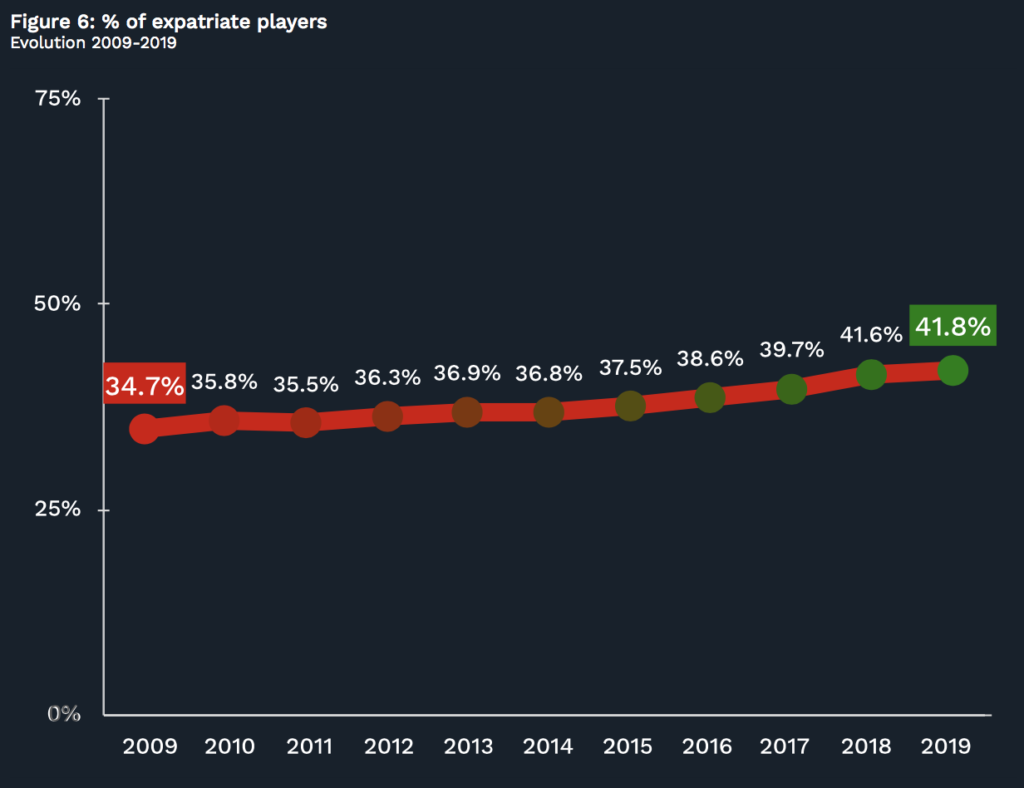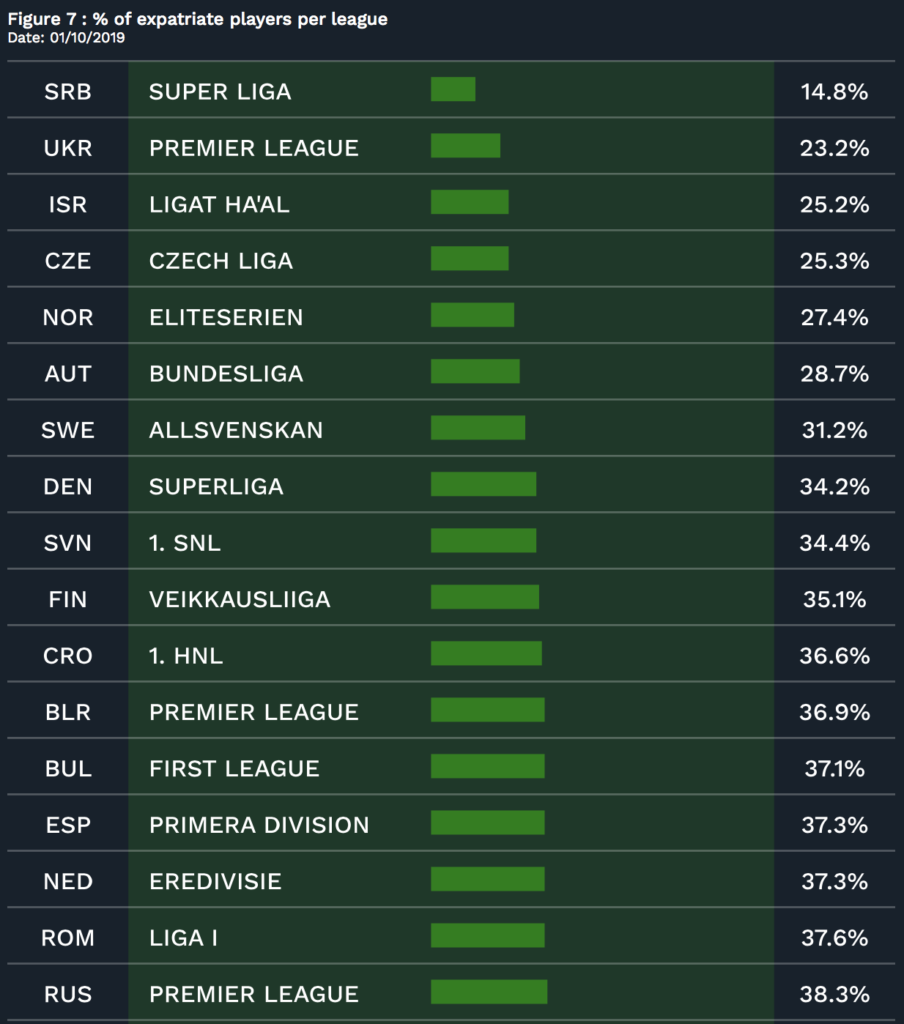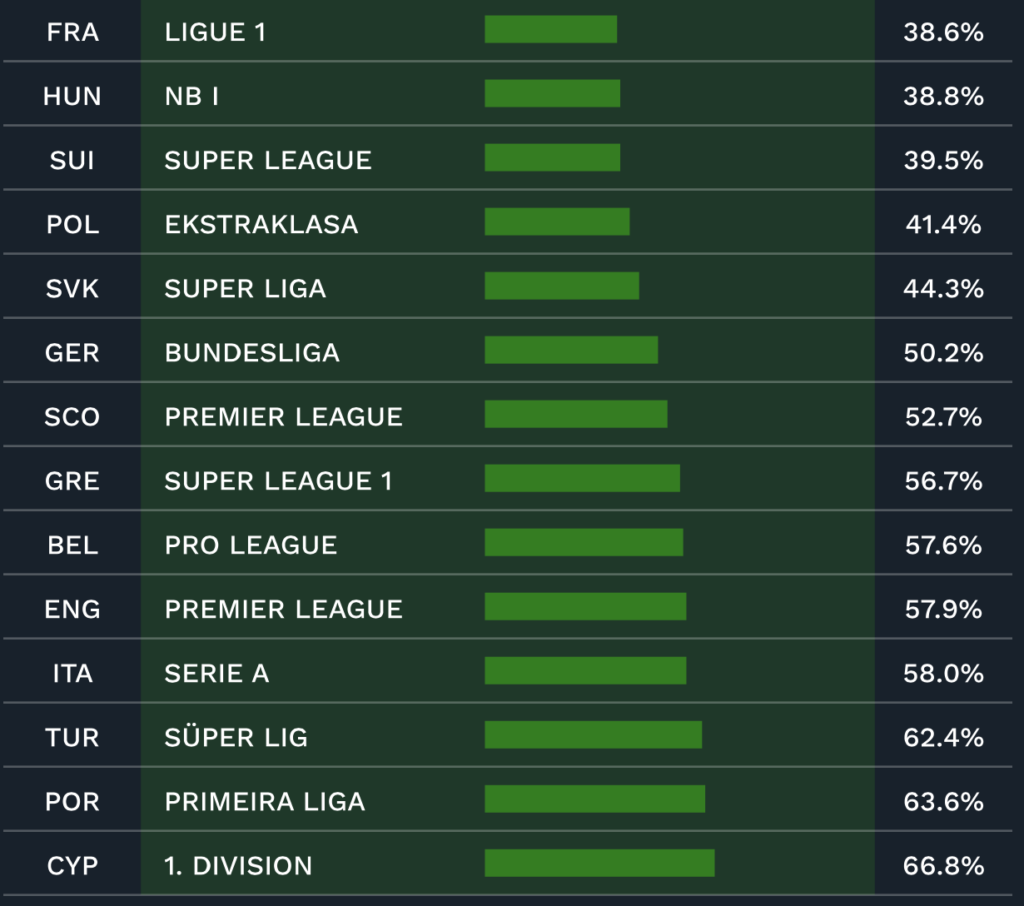November 5 – The trend of increasing numbers of non-domestic players in top division teams appears to have slowed with 41.8% of players in 31 European leagues now being expatriates. This is still an increase of 0.2% over last year but is less that the 1.2% average increase seen between 2014 and 2018.
The figures (player data is taken from October 1) come from the latest CIES Football Observatory report that examines the demographics of players in Europe. The report found that for the first time since 2009, the percentage of club-trained players had grown by 0.2%, though the authors caveat reading too much into this growth, saying: “It is thus difficult to claim that the tendency towards fewer club-trained footballers has reversed. In the same vein, the halt in the decrease in the average length of stay of players in their club of employment does not necessarily imply a return towards more stability.”
The report finds that the average age of players in squads has not changed being 26.07 years in the latest analysis, compared to 25.90 ten years.
What has been charted over the 10-year period of the reports has been the dramatic increase in expatriate players.
In the current report the authors say: “The highest levels of expatriate players were measured in four Mediterranean countries: Cyprus, Portugal, Turkey and Italy. Greece also has many players imported from abroad. The other leagues where expatriates represent a majority of squads are to be found in Great Britain (England and Scotland) and in Western Europe (Belgium and Germany).”
Source: CIES Football Observatory
See the full report at https://football-observatory.com/IMG/sites/mr/mr49/en/
Contact the writer of this story at moc.l1751449776labto1751449776ofdlr1751449776owedi1751449776sni@n1751449776osloh1751449776cin.l1751449776uap1751449776


